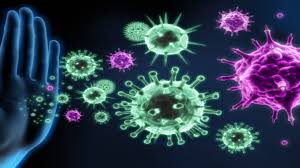In recent years, health experts in the United States have observed a concerning surge in cases of a rare bacterial disease known as melioidosis. This infectious disease, caused by the bacterium Burkholderia pseudomallei, has been predominantly found in Southeast Asia and Northern Australia. However, there has been an uptick in reported cases in the US, prompting worries among health professionals.
Melioidosis typically affects people with underlying health conditions or weakened immune systems. The bacterium responsible for the disease is commonly found in soil and water, making it more prevalent in regions with tropical climates. In the US, cases of melioidosis have been reported in individuals who have traveled to endemic areas or have come into contact with contaminated soil or water sources.
Symptoms of melioidosis can vary widely and mimic those of other illnesses, making it difficult to diagnose. The disease can present as a severe pneumonia, skin infections, or abscesses in various organs. In some cases, melioidosis can lead to sepsis, a life-threatening condition that requires immediate medical attention.
Diagnosing melioidosis can be challenging, as the bacterium Burkholderia pseudomallei is not commonly tested for in standard laboratory cultures. Health experts emphasize the importance of raising awareness among healthcare professionals about the disease and its symptoms to facilitate early detection and treatment.
Treatment for melioidosis typically involves a prolonged course of antibiotics, which can span several weeks to months. In severe cases, patients may require hospitalization and intensive care to manage complications associated with the disease. Prevention strategies include avoiding contact with soil and water in endemic areas, practicing good hygiene, and wearing protective clothing when working outdoors.
As cases of melioidosis continue to rise in the US, health experts stress the importance of increased surveillance, research, and public awareness to better understand and control the spread of this rare bacterial disease. By staying informed and taking necessary precautions, individuals can reduce their risk of exposure and protect their health.

